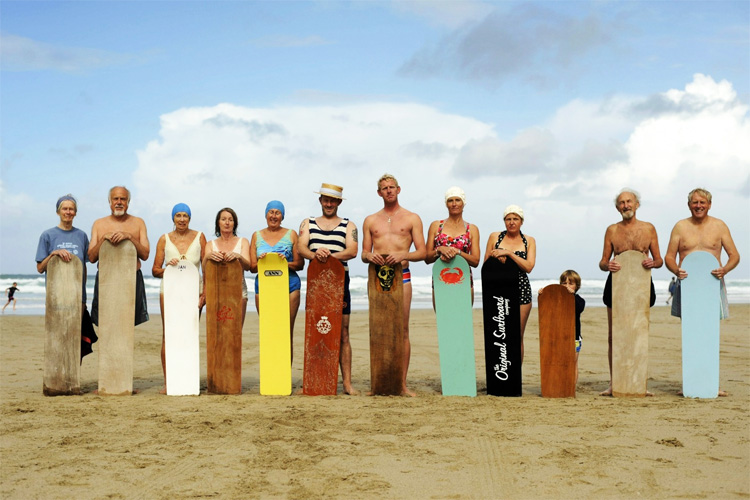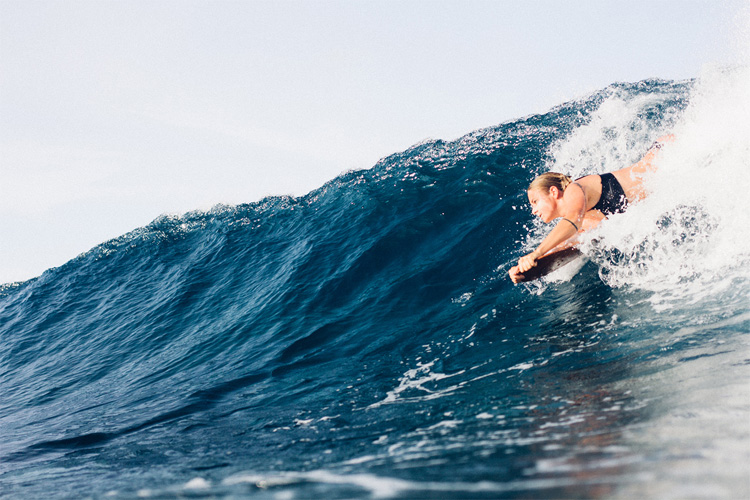Meet bellyboarding, the art of riding waves on a small wooden board. Learn more about the ancient recreational practice that conquered the globe and never disappeared.
Bellyboarding is a prone wave riding activity that is thought to date as far as 2,000 B.C. Many historians consider it to be the original form of board surfing.
The oldest bellyboard known to man is a rare 4'-to-4'5 '' model from the early 18th century. The board is part of Hawaii's Bishop Museum collection and is made of either koa wood or breadfruit.
Researchers believe that Polynesian and Hawaiian children used small wooden bellyboards as a training tool before taking on stand-up surfing.
Back then, they were made from paulownia and Gaboon wood.
In Hawaii, bellyboards are named "papa paepo'o" (or "paipo" boards if they're made of foam), with paipo boarding being the outdoor activity associated with these simple watercraft.
So, it is fair to state that before the words "bodyboarding" or "boogie boarding" were coined in the 1970s, bellyboarding was already a reality.
A Retro Wave Riding Hype
What is a bellyboard? The original bellyboard is a thin wooden plank with a slightly elevated round nose and a flat-cut tail - a pure and straightforward wave-riding tool.
With the explosion of surfing in the 1960s and its spread across the world, bellyboards gained new designs and reconquered their spot in the hearts of collectors and retro surfing enthusiasts.

Back in the 1960s, American surfers added stabilizing fins to their plywood bellyboards and rode for fun at Newport Beach's The Wedge and Oahu's Makapu and Sandy Beach.
Surf companies like Dextra and Newport Paipo even launched a few foam and fiberglass models in response to the popular surf mats that were already invading the lineups.
But the hype soon faded, and the good old bellyboard went underground.
When the 1970s arrived, surfers were too focused on professionalism, performance, and on the so-called shortboard revolution to pay attention to its unsophisticated innocence.
However, in the United Kingdom - where bellyboarding was introduced by World War I soldiers George Tamblyn and William Saunders - bellyboards continued to conquer new fans and keep the dream alive.
Since 2003, the World Belly Board Championships (WBBC) have attracted hundreds of bellyboarders to Chapel Porth, in England's Cornwall, to an incredible and timeless event that gathers old and young riders.
British craftsman Dick Pearce is also running an old family business and hand-making beautiful bellyboards so that this historical pastime continues a living legacy for generations to come.
